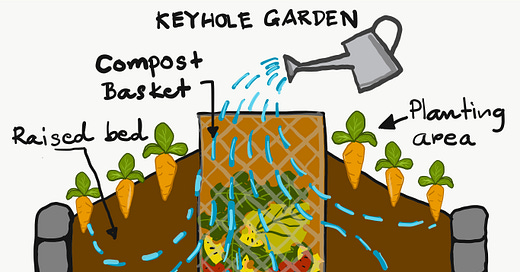Keyhole gardening, push/pull control of pests and growing amaranthus
Some take away ideas for gardeners from the Oxford Real Farming Conference and some questions about roses
🌱 I'm Sally Morgan, an organic gardener and botanist who loves to experiment. Here you can read about matters relating to climate change, sustainability, organic gardening and growing veg, helping you to become a climate savvy gardener 🌱☀️🌧️❄️🌡️
This week I finish my round up of topics that grabbed my attention at the Oxford Real Farming Conference.
Tomorrow’s Climate
Last week I focussed on Perrine Bulgheroni’s talk in this session. This week, I cover the remaining two speakers: Rafael Pflücker and Meshark Sikuku.
Rafael Pflücker is a professor of ecological agriculture at the Universidad Científica del Sur in Peru. He spoke about his work with Agronegocios La Grama overseeing the implementation of a regenerative agroforestry model on a ginger farm and how that has enabled the farm, now organic, to become climate-resilient. Originally the ginger was grown as a monocrop. The plant grows for two years before the roots are large enough to be harvested, but this necessitates digging up …




